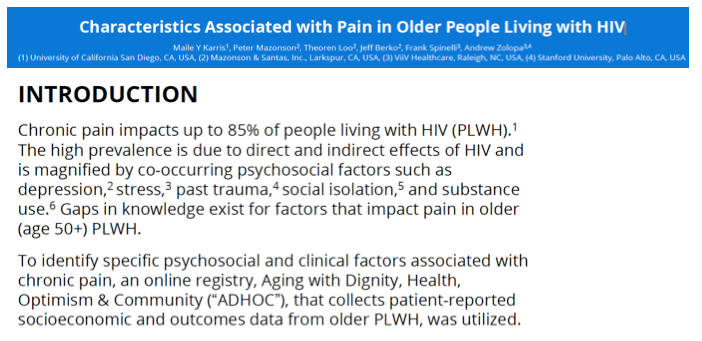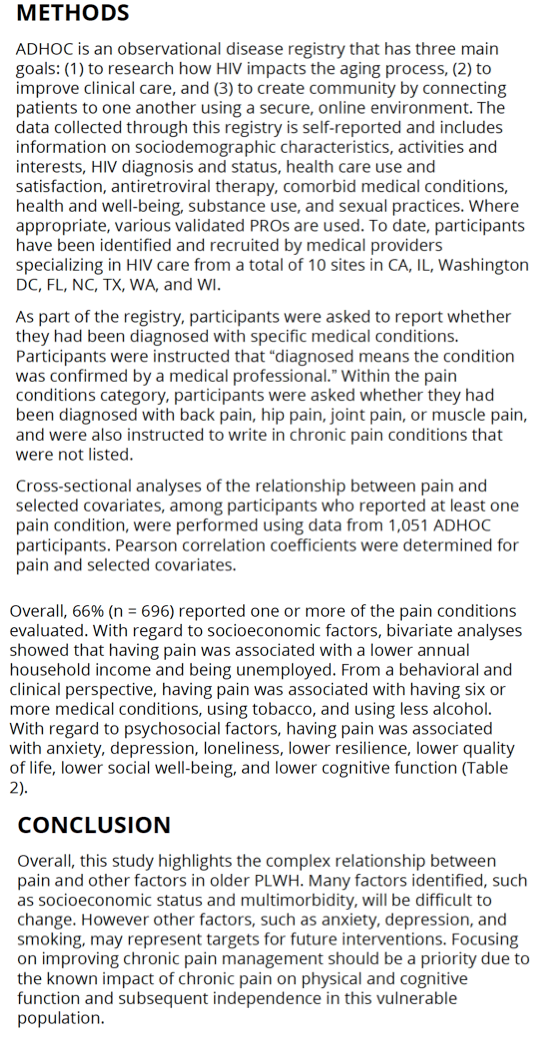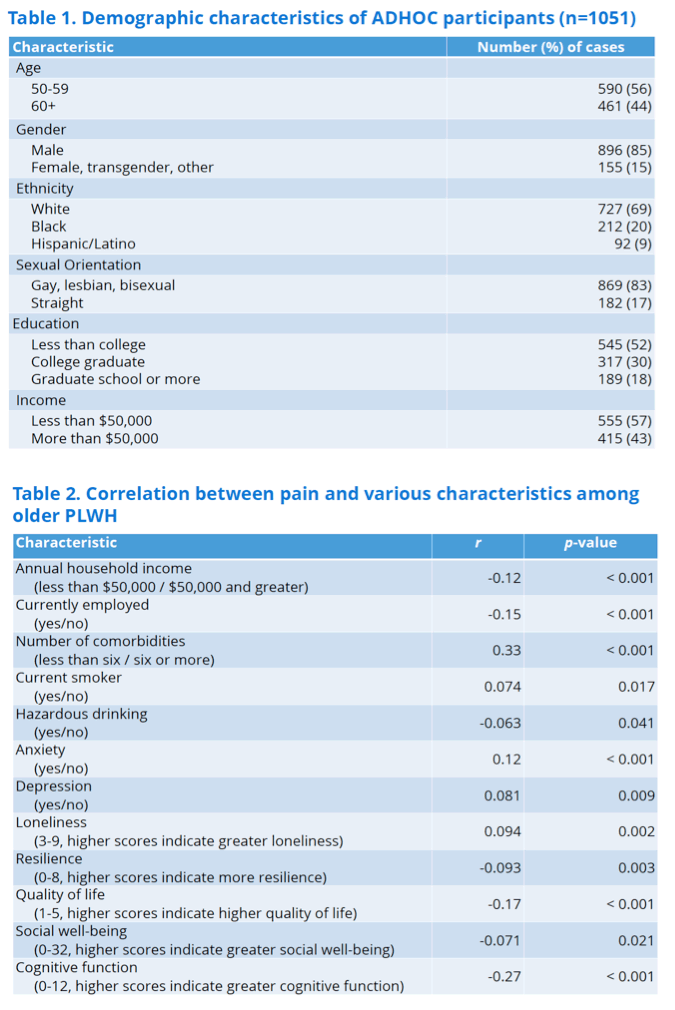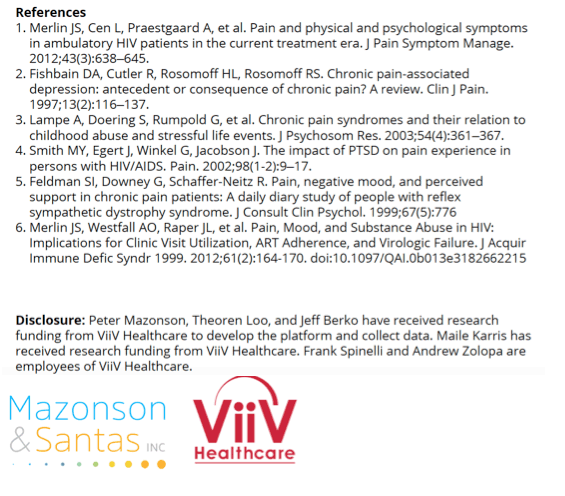 |
 |
 |
| |
Pain in Two Thirds of Older US HIV Group Tied to Comorbidities
|
| |
| |
IDWeek 2020, October 22-25, 2020
Mark Mascolini
Analysis of a nationwide US cohort of older people with HIV infection found that two thirds experienced pain [1]. In a study published around the time of IDWeek 2020 [2], researchers from the University of California, San Diego (UCSD) and collaborators from other centers reported that comorbidities strongly correlated with pain.
Pain can affect up to 85% of people with HIV [3] for a host of reasons. To get a better understanding of pain prevalence and correlates in an older HIV population, the UCSD team scrutinized data from an online registry, Aging With Dignity, Health, Optimism and Community (ADHOC), which amasses self-reported socioeconomic and outcomes data from older people with HIV. Working with ADHOC, clinicians at 10 sites in 7 states and Washington, DC recruited participants and recorded their data. Surveys specifically asked participants if they had been diagnosed with back, hip, joint, or muscle pain or if they endured other types of chronic pain. Researchers determined Pearson correlation coefficients to explore links between pain and certain demographic, behavioral, and clinical variables.
The 1051 study participants averaged 60.2 years in age and 461 (44%) were 60 or older. Most of the group were men (85%), and 83% were gay, lesbian, or bisexual. Racial/ethnic proportions were 69% white, 20% black, and 9% Hispanic. While 52% had less than a college education, 30% graduated from college, and 18% attended graduate school. Most participants, 57%, had an annual household income below $50,000.
The researchers counted 696 people (66%) who reported one or more pain conditions. Bivariate analysis identified 12 variables positively or negatively correlated with reporting pain:
Clinical factors:
-- Six or more comorbidities: r = 0.33, P < 0.001
Socioeconomic factors:
-- Annual household income below $50,000: r = -0.12, P < 0.001
-- Currently employed: r = -0.15, P < 0.001
Behavioral factors:
-- Current smoking: r = 0.074, P = 0.017
-- Drinking less alcohol: r = -0.063, P = 0.041
Psychosocial factors:
-- Anxiety: r = 0.12, P < 0.001
-- Depression: r = 0.081, P = 0.009
-- Loneliness: r = 0.094, P = 0.002
-- Lower resilience: r = -0.093, P = 0.003
-- Lower quality of life: r = -0.17, P < 0.01
-- Lower social well-being: r = -0.071, P = 0.021
-- Lower cognitive function: r = -0.27, P < 0.001
The researchers observed that certain factors affecting pain are difficult or impossible to change, whereas others may be reversed or prevented, including anxiety, depression, and smoking. Improving chronic pain management, they stressed, should be a clinical priority because chronic pain affects physical and cognitive function and consequent personal independence.
References
1. Karris MY, Mazonson P, Loo T, Berko J Spinelli F, Zolopa A. Characteristics associated with pain in older people living with HIV. IDWeek 2020, October 22-25, 2020. Abstract 929.
2. Karris MY, Berko J, Mazonson PD, Loo TM, Spinelli F, Zolopa A. Association of pain and pain medication use with multiple characteristics of older people living with HIV. AIDS Res Hum Retroviruses. 2020;36:663-669. doi: 10.1089/AID.2020.0039.
3. Merlin JS, Cen L, Praestgaard A, et al. Pain and physical and psychological symptoms in ambulatory HIV patients in the current treatment era. J Pain Symptom Manage. 2012;43:638-645.
Characteristics associated with pain in older people living with HIV




|
| |
|
 |
 |
|
|